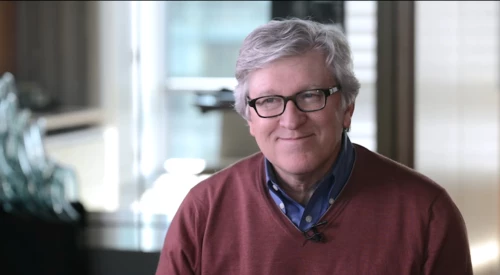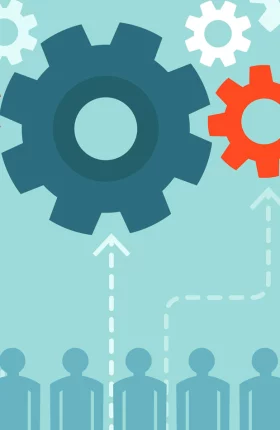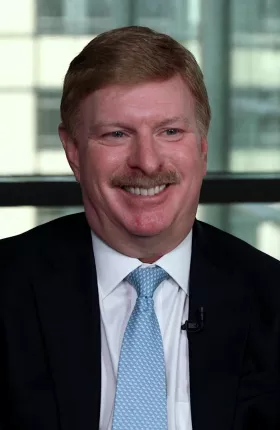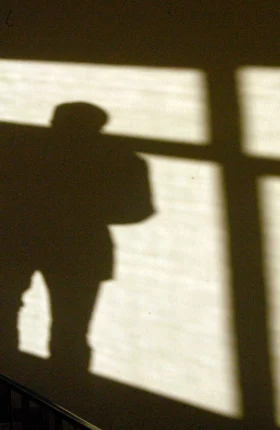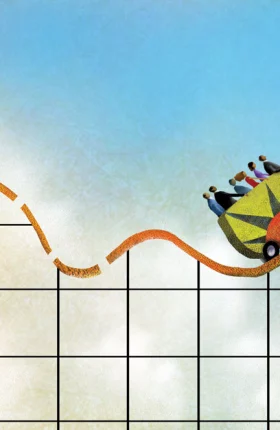As Jeff Raikes will tell you, the strategies that made Microsoft successful are not all that different from those that enable a philanthropic organization to make a real difference in the world. Among the parallels: the need to partner effectively and the ability to eliminate silos and foster cooperation.
Raikes, a former top executive of Microsoft, brought that mindset to the Bill & Melinda Gates Foundation, where he served as CEO from 2008 through April 2014. During his tenure, Raikes focused on positioning the foundation as a powerful catalyst for progress on seemingly intractable problems such as global health. To achieve this lofty goal, Raikes had to leverage a vast network of partners to achieve concrete, measurable goals.
Raikes’ career in the private sector has also made him a firm believer in the power of competition. Competitive pressure can lay bare a company’s weaknesses or missteps, driving the organization to adapt or die. Raikes remained similarly attuned to opportunities for improvement in philanthropy, engaging directly in a dialogue with critics of the foundation’s education efforts in the U.S. for example. Being open to divergent views, Raikes argues, “really raises the level of your game.”
Shortly before his departure from the foundation, Raikes sat down with Wendy Woods, a senior partner and managing director in BCG’s Boston office and the global leader of the firm’s Social Impact practice, to discuss how philanthropic organizations can deliver outsized results. Edited excerpts from that conversation follow.
The video interview was conducted as part of Leading in a Complex World, BCG’s series of discussions with corporate and public-sector leaders about thriving amid uncertainty.
You served as CEO of the Bill & Melinda Gates Foundation for more than five years after a very successful career at Microsoft. What was the highlight of your tenure?
The organization really is about having impact in society, taking on issues of equity, and helping enable all people to have an opportunity for a healthy and productive life. At the end of the day, you look at things such as: How many lives were saved because we were able to get kids vaccinated? How close are we now to polio eradication? Are we helping teachers be the best they can be through good teacher evaluation and clear standards such as the Common Core State Standards?
For me personally, I am most proud of helping increase our capacity for that type of impact.
The foundation aims to have an impact in very diverse areas and has set very audacious goals. At the same time, however, it is a relatively small organization. How do you ensure you are effectively delivering on those goals?
In order to have broad impact on a global scale, we have to think in terms of being a catalyst and providing leverage. My career at Microsoft really helped me on this. A big part of Microsoft’s success was a business model designed around engaging partners. When I was there, more than 750,000 companies made a business out of Microsoft’s business. That’s a very catalytic, highly leveraged way to operate.
At the foundation, we have to think in the same way. We have what to some might seem like large financial resources, but relative to the scale of the problems that we’re taking on, they’re a small percentage of what is needed. So we have to think in a very catalytic, very leveraged way—engaging partners and getting aligned along outcomes. We call this catalytic philanthropy.
The foundation teams with and depends heavily on vast numbers of external partners in order to have real impact. How do you manage the complexity of working with those partners and grantees?
That’s fundamental to how we approach our philanthropy. You have to think: What’s going to be in their best interests? What do they care about? What do we care about? How do we get aligned along those kinds of outcomes? To achieve our goals, we really have to think in terms of guiding our initiatives through this big ecosystem.
Making this happen requires great leaders and leadership. Great leaders are people who recognize the importance of engaging in a really, rich, constructive relationship with the vast number of partners we have. Great leadership means that they serve as role models of that engagement for people throughout the organization. That’s something that I try to do in my role. And I hope that that is reflected throughout our leadership, right down to the program officer who is meeting with a grantee in sub-Saharan Africa.
A good example was my decision a few years ago to personally engage with the critics of our U.S. education work. I wanted to show the rest of our leadership how important it is for us to be intellectually curious, not only among those with whom we work closely but also with those who may criticize our work. In business, competition is a very good thing. It really raises the level of your game. Similarly, in philanthropy, you have to listen to the critics. They may have insights about your work that would cause you to shift your strategy or that will determine how you need to respond to such criticism through your messaging.
You are working on some of the hardest problems in the world, areas of tremendous uncertainty, and a diversity of viewpoints and critics. How do you sort through that large stream of information to arrive at your investment decisions?
We’re taking on really hard problems. Given how important they are to society and to the global community, if they were easy to solve, they would have already been solved. I have a rule of thumb on this. Any time that you take on a really tough problem, it’s likely that the solution is ambiguous. The more ambiguous the solution, the more important it is to get rich and diverse input and then use your good judgment. At the same time, you have to be willing to suspend your fear of judgment by others because you’re going to get some things right and you’re going to get some things wrong.
I say to all of our employees, “Even if your grants or strategies don’t fully succeed, we only fail if we don’t learn.”
Knowing that there will be failures given the difficulty of the problems you are tackling, how do you balance the ability to learn with the need to maintain accountability in the organization?
I think you have to establish discipline and appropriate rigor. We have four core values at the Bill & Melinda Gates Foundation: innovation, optimism, collaboration, and rigor. One of the reasons Bill, Melinda, and I highlight rigor is to stress the importance of using data and evidence in decision making.
One of the beauties of philanthropy is that a lot of it comes from the heart—caring about improving the world or contributing to people having a better life. At the same time, you want to make sure that passion—that heart—is directed in ways that will really make a difference. So that sense of rigor—that use of the mind to drive what we do—is very important. It’s critical that we balance the heart and the mind.
You are known for pushing leaders to work as a team and for encouraging teamwork across the foundation. How do you make that happen?
When I came here, I inherited something that is very common within fast-growing companies and startups in high tech. When you want to grow rapidly, it’s very logical for leadership to segment the mission, to put leaders in place within those segments, and to tell them to run as fast as they can. That’s a very good growth strategy. But one of the unintended consequences of that approach is that you end up with silos. Given how rapidly the Bill & Melinda Gates Foundation grew, it was somewhat natural for some silos to develop.
Part of my job as the CEO was to break down those silos and build teams. One of the techniques I used was restructuring the organization. Another technique was picking the right kind of leaders. Another was to try and set a cultural tone to emphasize the importance of working together.
Were there other things you’ve done in the organization to reduce or manage some of the complexity?
One of the things that I did in the first 120 days or so of my tenure was to sit down with teams across the foundation. I think I had roughly 30 meetings with small groups of program officers. At the Bill & Melinda Gates Foundation, program officers are a little bit like software developers and program managers in the software business. Those are the folks who create the code, the products.
I listened in those meetings to learn what issues were holding people back. One of the most important was a lack of clarity in a number of areas—in how decisions were being made, what the roles were, and what the goals were. As a result, we introduced the term “hygiene.” We wanted to clean things up, to get clear about roles and goals. This included clarity on how decisions were to be made; what the timeline was for actions; who was going to provide input; and who didn’t need to provide input but needed to be informed so they could carry out the decision.
We really emphasized this term hygiene, which represented getting to that level of clarity. We talked about the importance of collaboration. We talked about the importance of quality intellectual dialogue and the importance of management effectiveness. I laid out those principles and synthesized them into what we called the How We Work Together Principles. Then in the succeeding year, as part of the performance review process, I evaluated the top 30 or 40 leaders in the organization on how effectively they were representing those principles in their work.
Jeff, you’ve chosen to move on from the foundation. What’s the legacy you want to leave behind?
Even if your level of resources stays the same, if you can improve by 7 percent each year in terms of using those resources effectively, in 10 years you double your capacity for impact. If I have helped shape this organization in ways that will significantly increase its capacity for impact in the years to come, then I’ll be very proud of the legacy that I leave behind.
